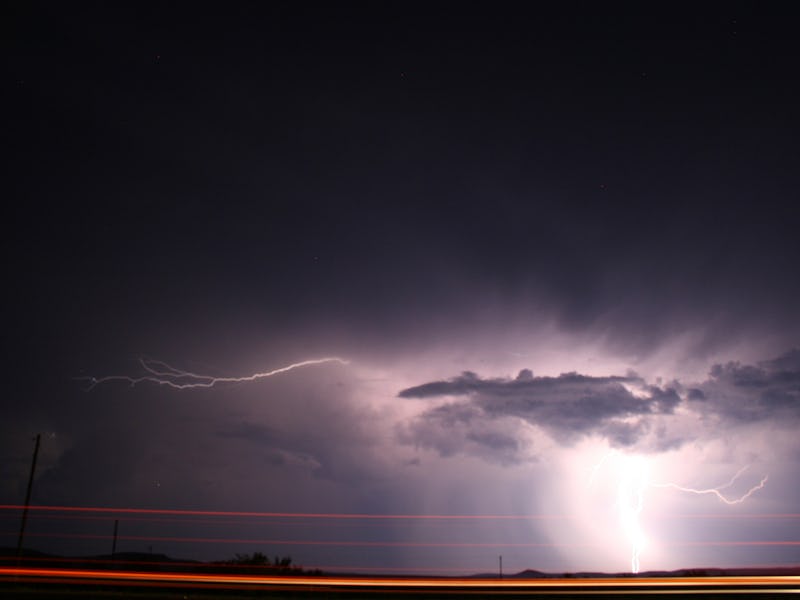Death from above never looked so lit. A new weather satellite currently orbiting the planet just captured stunning footage of lightning strikes as viewed from space, along with data crucial to helping us better predict storms.
The National Oceanic and Atmospheric Administration and NASA launched the GOES-16 satellite last November to collect more useful data about global weather patterns to help meteorologists in forecasting. This latest trove of data is a confirmation GOES-16 is poised to pay off.
This satellite can scan the globe five times faster than current satellites, and it includes the Geostationary Lightning Mapper (GLM), the first lightning detector in geostationary orbit. The GLM is constantly looking for lightning in the Western hemisphere, helping meteorologists predict storms and issue flood and flash warnings sooner.
The GLM can also show when thunderstorms stall or when they’re becoming stronger. In dry parts of the U.S., the satellite can help forecasters and firefighters identify places prone to wildfires if struck by lightning. It can also provide information to help aviators and mariners navigate safely by detecting lightning and thunderstorms over oceans.
In addition, the GLM can detect in-cloud lightning, which occurs five to ten minutes before lightning strikes the ground. As a result, this data gives forecasters more time to warn the public about severe storms.
Besides capturing information about storms, the GOES-16 has previously snapped a photo of the moon orbiting Earth in January.
In the video posted by NOAA, captured on February 14, the flashes show where lightning struck. The brightest storm was located over the Gulf Coast of Texas.
